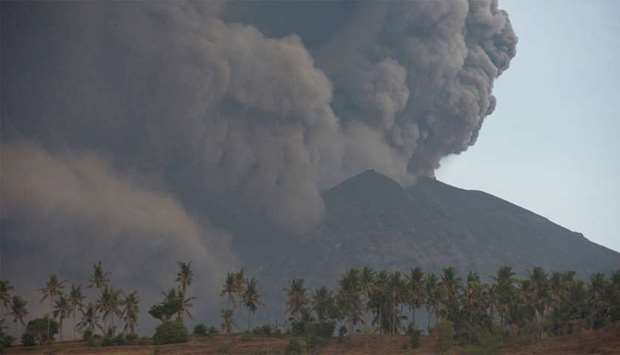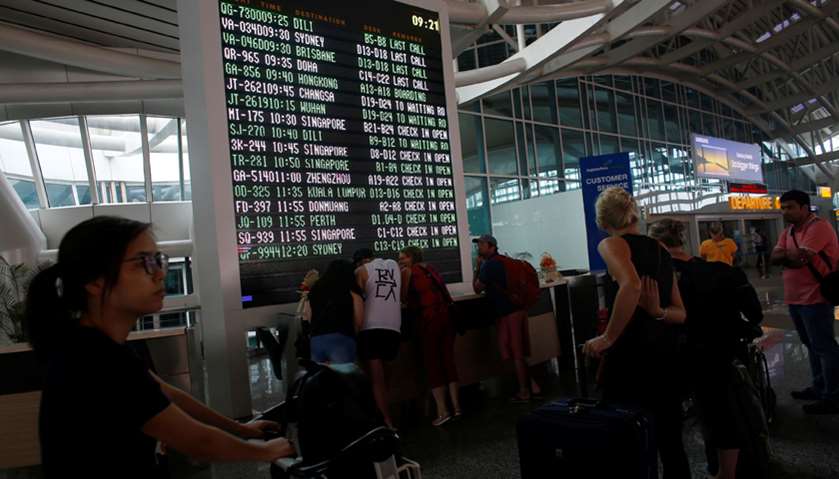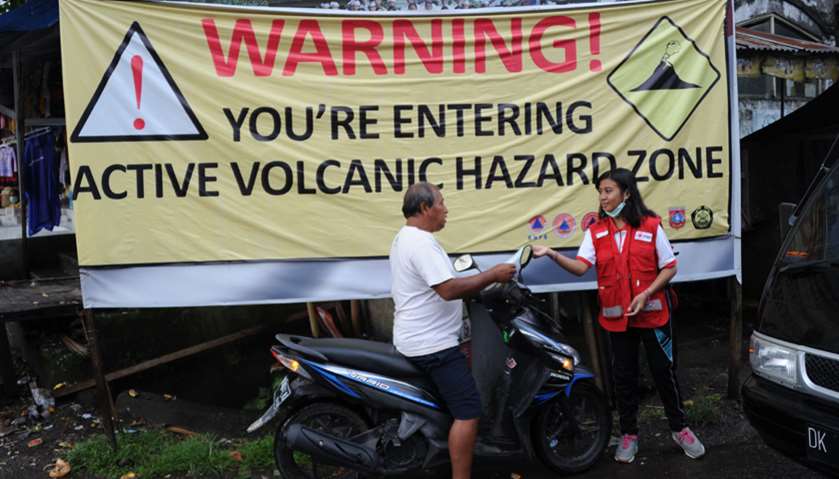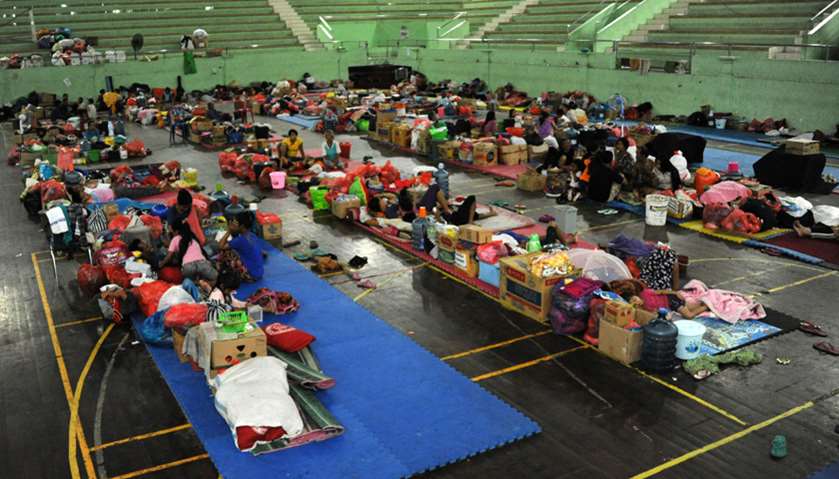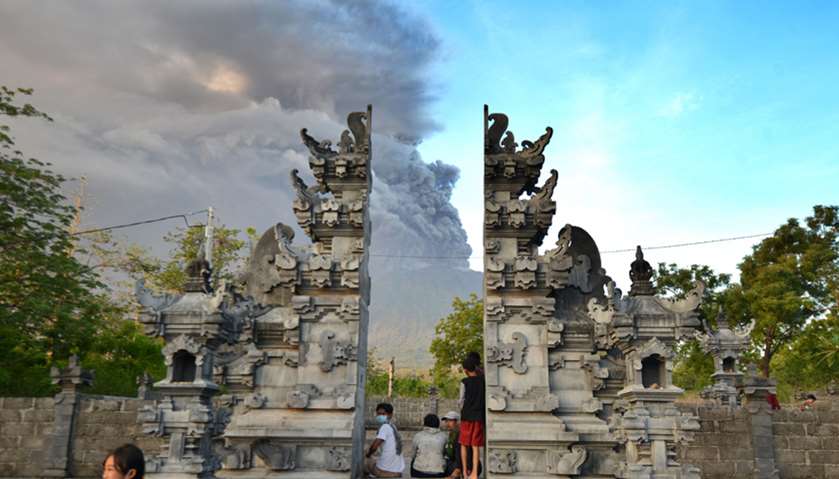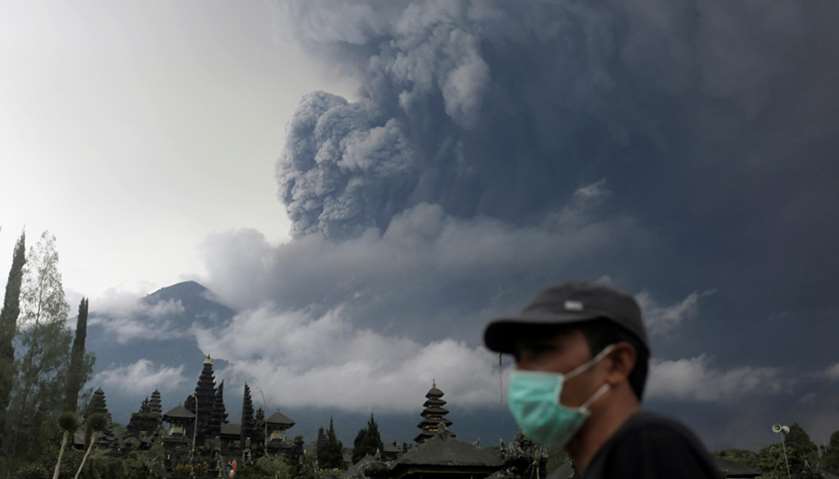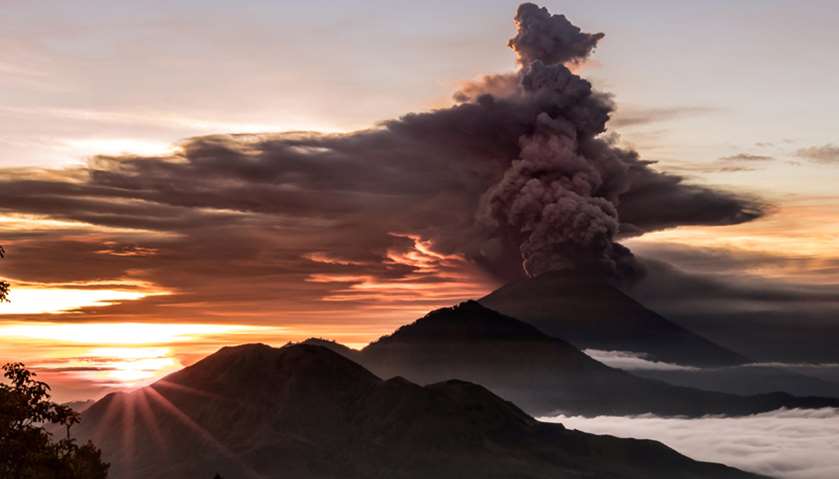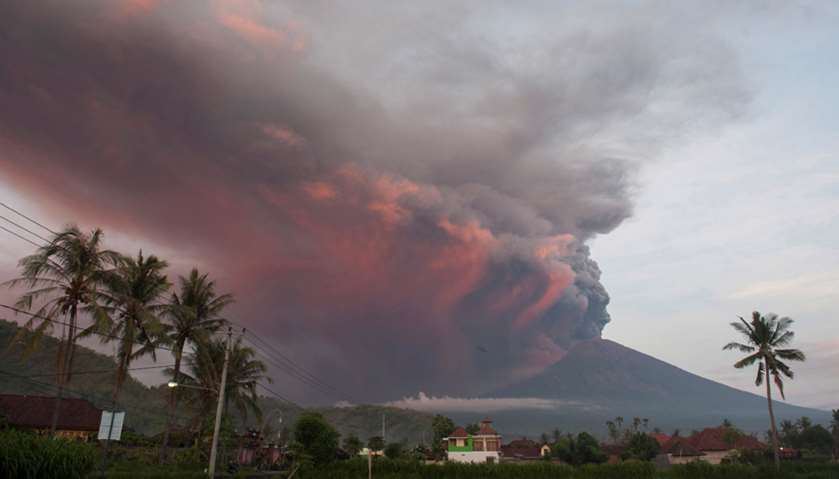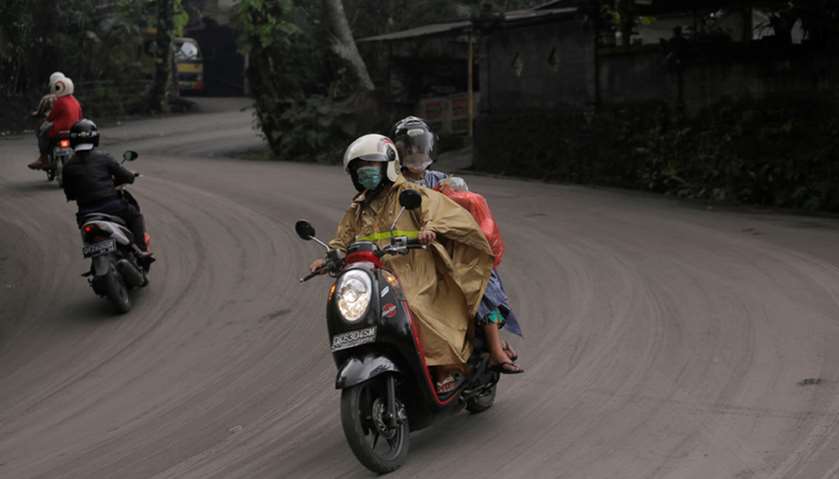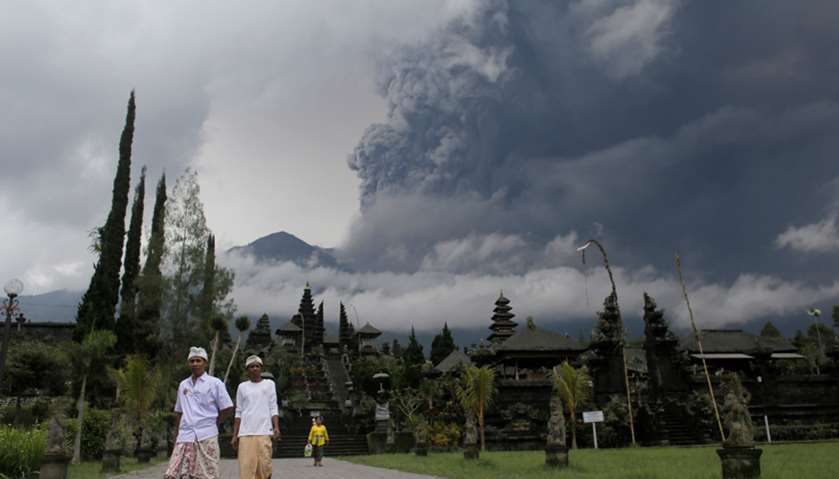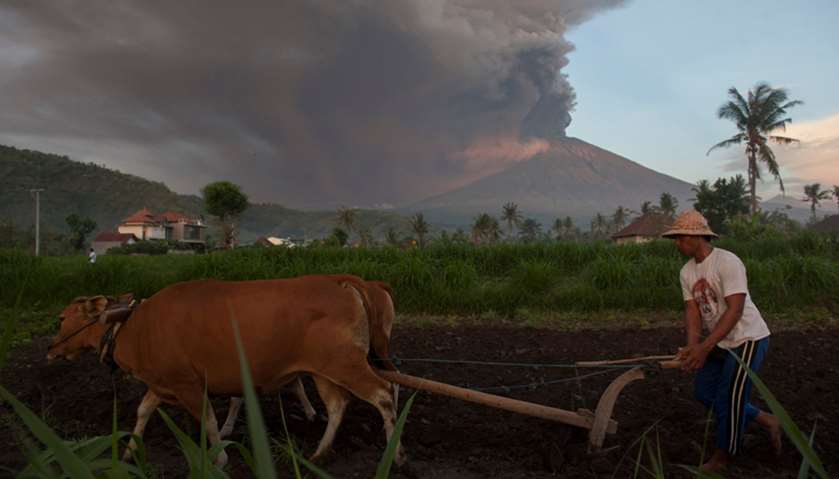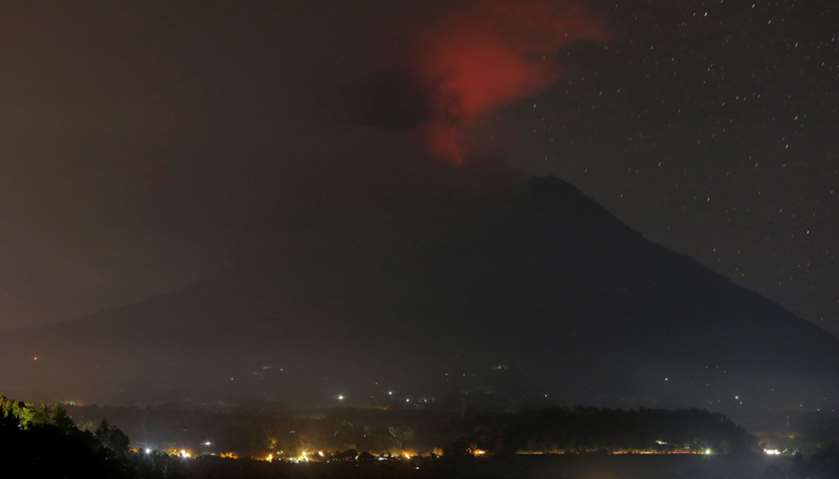A volcano on the Indonesian tourist hub of Bali sent plumes of grey smoke and steam thousands of metres into the air for the second time this week, triggering flight cancellations which have left thousands of tourists stranded, officials said Sunday.
Mount Agung spewed smoke as high as 4,000 metres (13,123 feet) above its summit Sunday morning, disrupting at least 28 flights departing and arriving at the resort island, a spokesman of Bali's airport said.
Ngurah Rai airport is operating as usual, but the decision to delay or divert flight is up to individual airlines, Ngurah Rai airport spokesman Arie Ahsanurrohim said.
‘We try to make the airport as comfortable as possible for the passengers affected, so far we provide special rooms for them to unpack their luggage and video entertainment so they can relax a bit,’ Ahsanurrohim told AFP.
At least 2,000 passengers are affected by the flight disruption, mostly tourists from Australia.
‘I meant to be at work tomorrow. How am I going to pay my bills?’ Sydney-based tourist Jake Vidler said.
Mount Agung last erupted in 1963, killing nearly 1,600 people.
It rumbled back to life in September with authorities raising the alert to the highest level, forcing 140,000 people living nearby to evacuate.
The volcano's activity decreased in late October and many people returned to their home as the alert was lowered to the second-highest level.
But Mount Agung rumbled again last Tuesday, forcing 25,000 people to seek shelter. Authorities urged people living within 7.5 kilometres (4.5 miles) of the mountain to evacuate.
It continued to spew smoke and ash for the second time this week on Saturday -- considered a phreatic eruption by volcanologists.
Authorities have decided not to raise the alert back to the highest level yet.
‘This time the tremors and quakes caused by the volcano's activities are significantly less than in September,’ said head of Indonesia's volcanology centre Kasbani, who like many Indonesians goes by one name.
Mount Agung is one of more than 120 active volcanoes extending the length of Indonesia, which straddles the Pacific Ring of Fire.

